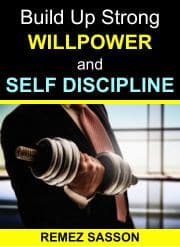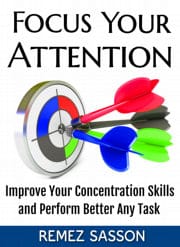
I spent my first 3 months of unemployment sleeping on a ratty mattress on the floor of a 4 foot by 15 foot room.
The next 6 months were spent in another small room, this time in a house with 13 other people. I managed to upgrade to a queen-size bed, but it took up 80% of the room. I used my suitcases as a nightstand because there was nowhere else to put them.
And yes, people stole my food.
Browse our online courses on meditation, positive thinking, overcoming procrastination, confidence, and freedom from distractions.
When I was unemployed, I applied to dozens of jobs and got rejected from all of them. I started to question whether I would ever get a job. If you’ve ever been unemployed, you know that it takes a toll on your identity – it’s difficult to feel like a productive or valuable person with unemployment weighing on you.
But before I descended into a spiral of self-doubt, I reached into the mental toolkit I developed in college as a psychology major.
The tool I used helped me banish my insecurities; I was employed within a month and a half of using it.
I call it the drill, and you can use it to:
- Stop doubting yourself professionally and work towards the job and career you really want
- Stop feeling judged or out of place in the gym, and finally get the motivation to work out
- Put a stop to wondering what people think of you and effortlessly connect with them as people
What Is the drill?
The drill is a technique I borrowed from cognitive behavioral therapy, the most widely used and most effect technique out there.
I call it the drill because step one is to drill down to the very core of the problem. Chances are high that you have some kind of distorted thinking that’s affecting your emotions and, by extension, your actions.
The first time I used the drill was for working out. I could never seem to consistently go to the gym. So in step one I asked myself: “what’s really going on?”
And I got an answer: “I don’t like going to the gym because I’m not fit and feel out of place. The gym is for fit people.”
Step two is to question everything. You’ve drilled down deep to figure out what’s really bothering you (and write that down! It’s easier to fight something you can see). Now you need to poke holes in it.
In my case, it was easy to fight: “Who says the gym is for fit people? The gym is a place for people that want to get fit, and that includes me. No one has any more ‘right’ to be here, and if I’m not sure what to do I can find a program to follow.”
Does that mean I changed overnight? Of course not. I had to use the drill quite a few times. In fact, most days I used it before and after working out – but I did start working out.
The Two Steps of the Drill Are:
1. Ask what’s really going on: Figure out what’s really bothering you and write it down. It needs to exist outside your head so you can fight it.
2. Question everything: Chances are high that you have some distorted thinking. Expose the reasons that your doubts are unfounded, and keep at it.
Apply these two steps over time and you’ll see serious improvement. When I used the drill, it affected every aspect of my life – from fitness, to careers, to relationships.
What are you struggling with? How can you use the drill?
About the Author
Benyamin Elias is a fitness and habits coach at Routine Excellence. He has been featured in Mind Body Green, Develop Good Habits, and The Huffington Post, and uses psychology to help busy people stick to fitness – even if getting off the couch is its own workout. You can get the exact, step-by-step guide he used to stay motivated (and gain 50lbs of muscle) for free on his website.


